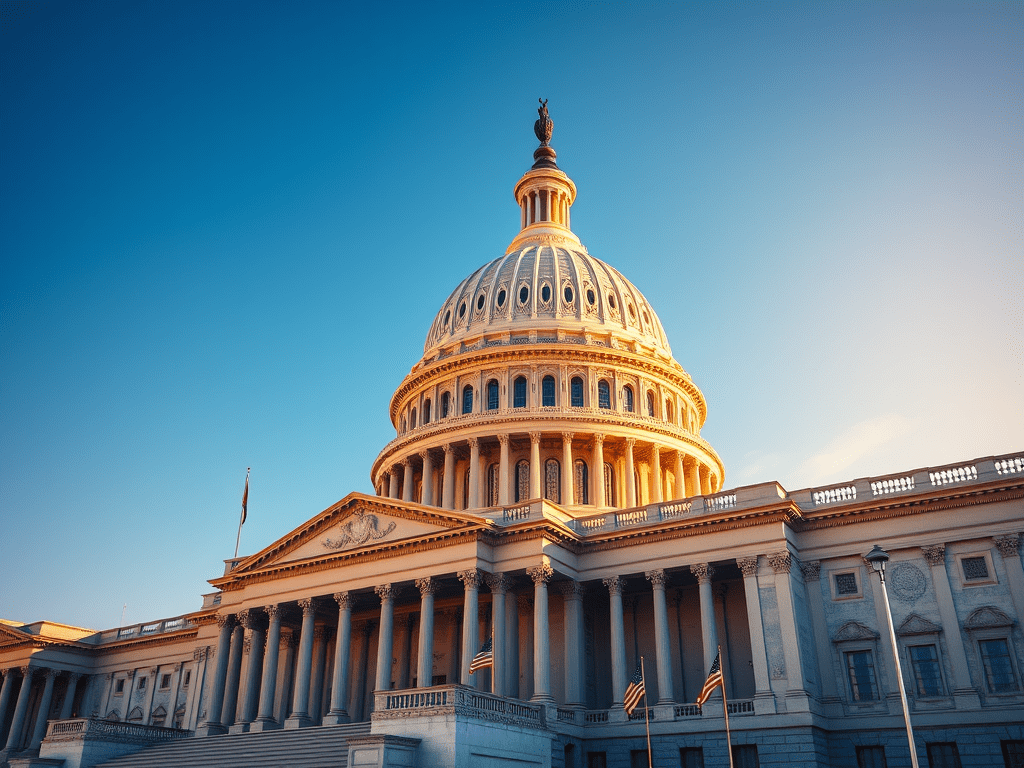As an Amazon Associate we earn from qualifying purchases.
The United States is known for its diverse and rich tapestry of holidays, each representing different facets of its cultural, historical, and social fabric. From Independence Day to Martin Luther King Jr. Day, these holidays reflect significant moments or figures in American history. However, the process of establishing a new national holiday is far from straightforward. This article reviews the intricacies of what it takes to get a new national holiday recognized in the United States.
The Legislative Journey of a Holiday
The journey to national holiday status begins and largely ends in the halls of Congress. The U.S. Constitution does not explicitly mention holidays, but the power to establish one falls under the legislative authority of Congress to regulate the “times, places, and manner of holding elections for Senators and Representatives” as well as other general welfare provisions.
Proposal in Congress
The first step involves a legislator proposing a new holiday through a bill. This bill must then be introduced in either the House of Representatives or the Senate. For example, a Senator might introduce a bill to commemorate a significant historical event or to honor an influential American figure. The content of the bill would specify the date, name, and perhaps the purpose of the holiday.
Committee Review
Once introduced, the bill goes to a committee relevant to its content. Typically, this would be the Judiciary Committee in either chamber, as they oversee issues related to federal holidays. Here, the bill is scrutinized, debated, and possibly amended. The committee might hold hearings where they hear testimonies from historians, cultural experts, or the public to gauge the significance of the proposed holiday.
Congressional Approval
If the bill passes through the committee, it moves to the floor of the chamber where it was introduced for a vote. Here, it must garner enough support to pass. Political will, public demand, and cultural relevance play significant roles in swaying votes. After passing one chamber, the bill must go through a similar process in the other. If both the House and Senate pass the bill, but with different versions, a conference committee reconciles these differences.
Presidential Action
Upon agreement in both chambers, the bill goes to the President for approval. The President can sign it into law, making the holiday official, or veto it. However, a veto can be overridden by a two-thirds vote in both the House and Senate, though this is rare.
Cultural and Social Considerations
Beyond the legislative process, cultural and social currents significantly influence whether a new holiday will be adopted:
Public Support
A holiday with strong public backing has a better chance of becoming law. Public campaigns, petitions, or widespread media coverage can pressure legislators to act. For instance, the push for Martin Luther King Jr. Day involved decades of activism and public support.
Cultural Resonance
The proposed holiday should resonate with a significant portion of the American populace. It should either reflect a national identity, commemorate a universally recognized achievement, or address a need for national reflection or celebration.
Economic Impact
Holidays can have profound economic implications. Retail, travel, and hospitality industries might support holidays that encourage spending, like additional shopping days. Conversely, there’s resistance from sectors where additional holidays mean extra labor costs or loss of productivity.
Educational Value
Holidays that carry an educational component, teaching about history, civil rights, or cultural diversity, often garner support from educators and cultural institutions, advocating for their formal recognition.
Historical Precedents
Looking at past holidays provides insight into successful strategies:
- Independence Day: Born out of the need to celebrate national sovereignty, it was naturally adopted with little opposition.
- Martin Luther King Jr. Day: This holiday faced significant opposition on racial and economic grounds but was eventually passed due to persistent civil rights activism.
- Veterans Day: Originally Armistice Day, it was expanded to honor all veterans, reflecting a broad Congressional and public consensus on honoring military service.
Challenges and Controversies
Establishing a new holiday isn’t without its challenges:
- Political Polarization: In today’s political climate, even seemingly apolitical holidays can become battlegrounds for different ideologies.
- Economic Costs: Additional holidays mean more days off, which can be costly for businesses and the economy in terms of lost productivity.
- Cultural Representation: There’s an ongoing debate about which groups or events deserve national holiday status, leading to potential cultural clashes.
- Federal vs. State Holidays: Not all holidays need to be federal; many are state-specific, which can lead to a patchwork of observances across the country.
Summary
The establishment of a new national holiday in the U.S. is a complex interplay of legislative action, cultural relevance, public support, and economic considerations. It requires not just legislative maneuvering but also a societal consensus or at least a significant advocacy effort. The journey from proposal to a day off enshrined in law is fraught with hurdles, from committee debates to presidential desks. Each new holiday adds another layer to the narrative of what it means to be American, reflecting both the nation’s past and its evolving identity. While the process is challenging, the result is a new thread in the cultural fabric of the United States, celebrated by millions.
Today’s 10 Most Popular Books on United States History
View on Amazon
Last update on 2025-01-15 / Affiliate links / Images from Amazon Product Advertising API
